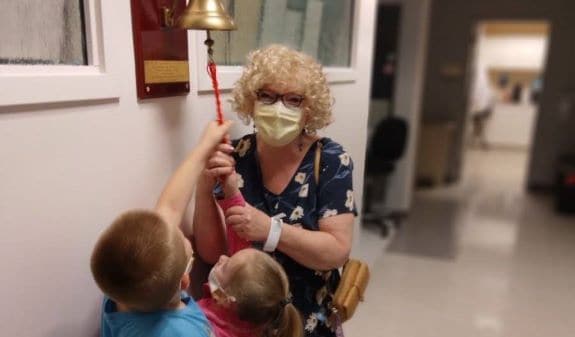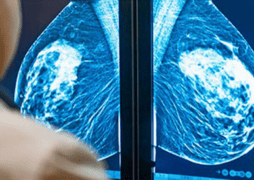After a breast cancer diagnosis, women (and men) have to weigh many, often complex treatment options. Then, along with the help of their medical team and family members, they must make important choices about their care.
Key to making these decisions is reliable information about breast cancer. Unfortunately, not all the information people have access to is as trustworthy as it should be. The Internet can be a source of good information, but it is also filled with myths about breast cancer. Sometimes it’s hard to distinguish between the good information and the myths.
Here, we debunk five common myths about breast cancer treatment. We hope this will help put your mind at ease and help you make the best possible choices for your treatment.
Myth #1 – Breast cancer surgery and biopsies cause cancer to spread
Breast cancer surgery and surgical biopsies do not cause breast cancer to spread.
What about surgery and other types of cancer?
For some cancers, such as uterine cancer, surgery may in some cases spread the cancer. For example, you may have seen recent news stories about specific surgical procedures that are sometimes used to perform hysterectomy and myomectomy (removal of growths from the uterus). Certain procedures used in uterine surgery have been found to spread undiagnosed cancer cells into the abdomen and pelvic area. If a woman has undiagnosed cancer of the uterus, those cancer cells can then spread and grow in other organs.1 The U.S. Food and Drug Administration has issued a safety alert on the use of such procedures.
The techniques used in breast surgery and breast biopsy are different from uterine cancer surgery. So, there is no risk of spreading breast cancer cells.
Myth #2 – If a titanium clip is left in my breast after a biopsy, it can damage the breast or travel to other parts of my body
Titanium guiding clips – also called markers – have been used since the late 1990s to mark the location of a suspicious area in the breast. Inserted during an image-guided needle biopsy, these small (2 to 3 mm) clips show up on X-rays and other images to help surgeons locate and remove breast tumors.
During surgery to remove a breast tumor, the clip is also removed. If surgery is not needed, the clip is left in place. If the biopsy did not show breast cancer, you would not have surgery just to remove the clip.
Clips do not damage the breast and are safe with only rare cases of allergic reactions.2 Data show that clips stay close to their original location and do not travel beyond the breast.3
The clips can also help with the follow up of benign breast conditions.
Myth #3 – I don’t have time to get a second opinion because I must begin treatment as soon as possible
One of the most important things to do when considering breast cancer treatment options is to get a second opinion.
Most breast cancers grow slowly enough that taking the time to meet with several doctors and consider the best approaches to treatment won’t affect survival.
The National Breast and Cervical Cancer Early Detection Program guidelines recommend starting treatment within 60 days of being diagnosed. While many women start treatment in about half this time, there doesn’t seem to be any survival difference between people who begin treatment less than 30 days after diagnosis compared to those who begin 30 to 59 days after diagnosis.4
Of course, it’s important to not delay treatment for too long, especially with later-stage cancers. 4 However, nearly everyone with breast cancer can take the time they need to consider their options without affecting survival, provided treatment is started within the 60-day recommended period.
Myth #4 – Everyone diagnosed with breast cancer dies from breast cancer or everyone diagnosed with breast cancer survives
It is a myth that everyone who gets breast cancer will die from breast cancer. With modern treatment, about 90 percent of women with early stage breast cancer now live five or more years after diagnosis.5 Each case is different though and average rates of survival vary greatly by cancer stage.
While breast cancer survival rates have been a triumph of the past 20 years, they still show how serious breast cancer is today. Now there are about three million breast cancer survivors in the U.S. However, more than 40,000 women (and more than 400 men) still die from breast cancer each year.6
So, it is a myth that everyone who gets breast cancer dies from breast cancer. And, it is also a myth that everyone who gets breast cancer survives. Many people will survive breast cancer but some, unfortunately, will not.
Myth #5 – Chemotherapy and radiation therapy are more harmful than helpful
One of the important findings from the past decades of research on breast cancer is that treating cancers with chemotherapy and radiation therapy saves lives.
This, of course, doesn’t mean that these treatments do not have unpleasant and potentially serious side effects. However, the long-term benefits of properly treating breast cancer with chemotherapy and radiation therapy outweigh their potential harms.
One analysis that combined the results from 60 randomized clinical trials found that chemotherapy extended survival for women of all ages and for a broad range of breast cancers. For example, the study found:7
Five-year relative survival for women with localized breast cancer (cancer that has stayed within the breast) is nearly 99 percent. For women with regional disease (cancer that has spread to the lymph nodes), this number drops to 85 percent. For women with distant cancer (cancer that has spread to other organs), five-year relative survival is just 26 percent.7 If you look at longer time frames – say 10-year or 15-year survival – these numbers will be lower across the board.
Radiation therapy has been found to cut the risk of dying from breast cancer by about 20 percent in women who had lumpectomy.8 Although there is a small risk of second cancers with breast radiation, the benefits of radiation therapy for most people will outweigh this risk.
Exactly how a person’s breast cancer is treated depends on many factors. Since chemotherapy and radiation therapy do have some important risks, they are not recommended in every case. Understanding the potential benefits and harms of any therapy is important to making an informed decision about the best way to treat breast cancer. Discussing your treatment options in detail with your doctor is vital.
Komen chemotherapy and radiation therapy resources
Adjuvant Chemotherapy and Overall Survival
ww5.komen.org/BreastCancer/Table39Adjuvantchemotherapyandoverallsurvival.html
Long-Term Side Effects of Chemotherapy
ww5.komen.org/BreastCancer/LongTermSideEffectsofChemotherapy.html
Radiation Therapy
ww5.komen.org/BreastCancer/Radiation.html
Side Effects of Radiation Therapy
ww5.komen.org/BreastCancer/SideEffectsofRadiationTherapy.html
Summary
There are many common myths about breast cancer that can cause worry and make treatment decisions more difficult for those diagnosed with breast cancer. Debunking myths can lessen worries and help you make more informed treatment decisions.
For trusted and accurate breast cancer information, visit www.komen.org or call our breast care helpline at 1-877 GO KOMEN (1-877-465-6636). Calls to our breast care helpline are answered by a trained and caring staff member Monday – Thursday 9 a.m. EST – 7 p.m. EST and Friday 9:00 a.m. – 6:00 p.m. EST. Our helpline provides free, professional support services to anyone with breast cancer questions or concerns, including breast cancer survivors and their families. You can also email the breast care helpline at helpline@komen.org.
References
- Brower V. FDA likely to further restrict or ban morcellation. Lancet Oncol 15:e369, 2014.
- Thomassin-Naggara I, Lalonde L, David J, Darai E, Uzan S, Trop I. A plea for the biopsy marker: how, why and why not clipping after breast biopsy? Breast Cancer Res Treat. 132(3):881-93, 2012.
- Kass R, Kumar G, Klimberg VS, et al. Clip migration in stereotactic biopsy. Am J Surg. 184(4):325-331. 2002.
- McLaughlin JM, Anderson RT, Ferketich AK, Seiber EE, Balkrishnan R, Paskett ED. Effect on survival of longer intervals between confirmed diagnosis and treatment initiation among low-income women with breast cancer. J Clin Oncol. 30(36):4493-500, 2012.
- National Cancer Institute. SEER Stat Fact Sheets: Breast Cancer. http://seer.cancer.gov/statfacts/html/breast.html, 2015.
- American Cancer Society. What are the key statistics about breast cancer?http://www.cancer.org/cancer/breastcancer/detailedguide/breast-cancer-key-statistics, 2015.
- Early Breast Cancer Trialists’ Collaborative Group. Effects of chemotherapy and hormonal therapy for early breast cancer on recurrence and 15-year survival: an overview of the randomised trials. Lancet. 365:1687-1717, 2005.
- Early Breast Cancer Trialists’ Collaborative Group. Effect of radiotherapy after breast-conserving surgery on 10-year recurrence and 15-year breast cancer death: meta-analysis of individual patient data for 10,801 women in 17 randomised trials. Lancet. 378:1707-1716, 2011.



